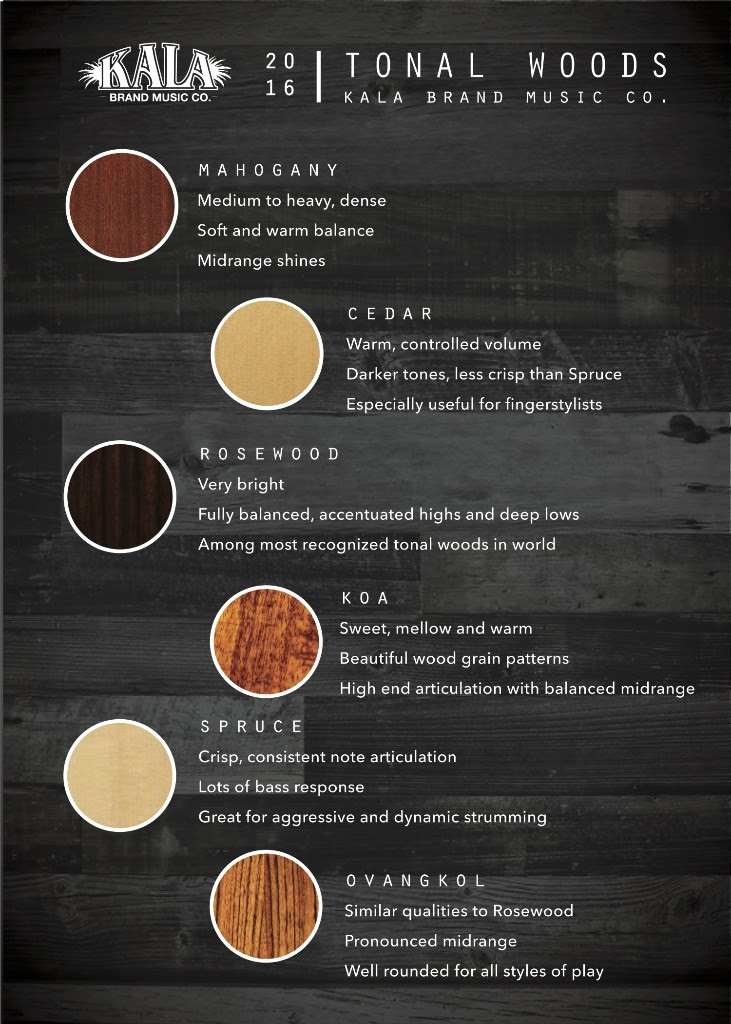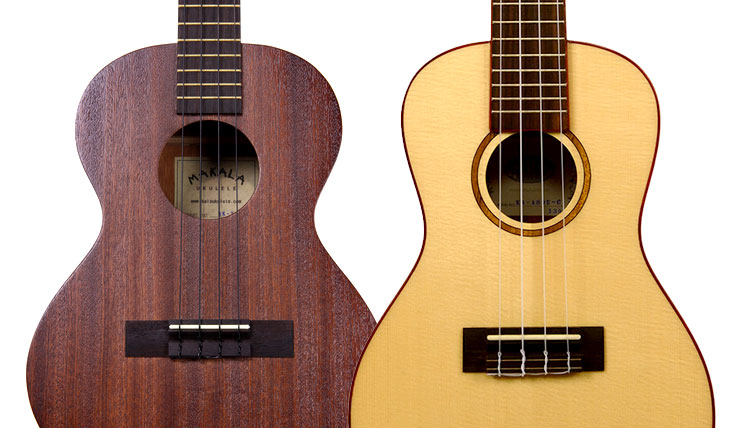Ukulele Wood Comparison - Different Ukulele Wood Types
Posted by Austin Bazaar on 11th Mar 2016
Are you wondering which ukulele tonewoods are best? What is tonewood anyway? Read on to find out about wood types and their influence on sound.
Ukulele Tonewoods
The term "tonewood" refers to woods that are chosen for instruments based on how they will affect the way those instruments sound. For example, some woods are more resonant than others when used in the construction of instruments.
When the body of a stringed acoustic instrument resonates, the wood it is made of will emphasize different tones more, such as highs or lows. With this in mind, know that the wood that your acoustic instrument is made of will affect its "voice."
Choosing the best wood for your ukulele
Many factors should go into your ukulele purchase, including your skill level, price range, and how the instrument looks and feels. With that in mind, one of the major features that will influence the price range and quality of your instrument is what type of wood (or other material) it is made out of, and how that will influence the way it sounds.
Some ukuleles feature only one type of wood, while others have been put together from several types of wood. For example, you could have a ukulele with a solid koa top and ovangkol back and sides. Some ukuleles feature gorgeous natural patterns and colors thanks to the exotic natural woods they are made of.
Wood types
Here are some of the most commonly used ukulele wood types and the influences they have on sound:

Mahogany
- Medium to heavy, dense
- Soft and warm balance
- Midrange shines
Cedar
- Warm, controlled volume
- Darker tones, less crisp than Spruce
- Especially useful for fingerstylists
Rosewood
- Very bright
- Fully balanced, accentuated highs and deep lows
- One of the most recognized tonal woods in the world
Koa
- Sweet, mellow and warm
- Beautiful wood grain patterns
- High end articulation with balanced midrange
Spruce
- Crisp, consistent note articulation
- Lots of bass response
- Great for aggressive and dynamic strumming
Ovangkol
- Similar qualities to Rosewood
- Pronounced midrange
- Well rounded for all styles of play
|
|
| Left: Makala MK-T Tenor Ukulele with Agathis body, back and sides. Right: Kala KA-ASOV-C Solid Spruce top concert ukulele with solid Ovangkol back and sides. |
Solid vs Laminate
Another factor that influences sound is whether the wood used in your instrument is constructed from solid pieces of wood or from wood laminate. Laminate consists of thin layers of wood pieced together, and it is commonly found on entry level ukuleles.
Solid wood instruments are ideal in that they are literally more "solid" (built to last) and most often have a more rich and resonant tone. However they typically cost more and are more sensitive to changes in the weather and environment, making laminate preferable for those who take their ukuleles outdoors.
Ukuleles made from laminates and other materials are typically cheaper and are also popular for kids and school programs as they can be easier to clean, maintain, and replace if needed!
Check out some of our favorite laminate ukuleles here >>> Shop Kala Makala Ukuleles
Learn more about solid vs laminate ukuleles in this video with Kala artist Kevin Carroll.
Hopefully this ukulele wood comparison helps you as you start off your ukulele journey. What are your favorite ukulele tonewoods? Let us know in the comments section below!




